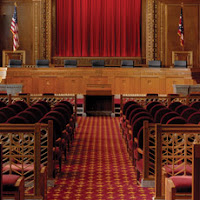Summer Recess is Over
For many Ohio schools, a new year has begun, or will soon. The
Supreme Court of Ohio also has been on its summer recess — its break from
hearing new cases. But the recess ends next week when we justices are to hear oral arguments in eight
cases.
 |
| Courtroom of the Supreme Court of Ohio at the Thomas J. Moyer Ohio Judicial Center |
We
hear a variety of cases. Some come to us automatically and some are
accepted as cases of general or public
interest. Some have questions arising under the Ohio or U.S.
Constitutions. Others are cases in which
two or more courts of appeals have issued conflicting opinions. From late August every year
until June, oral arguments are scheduled for Tuesday and Wednesday mornings on the cases that the
lawyers have briefed.
The lawyers for each side have 15 minutes to argue their positions. Each of the seven justices may ask questions at any time, and often a dynamic exchange occurs about the facts or law of the case being argued. The attorneys are signaled when they’re getting low on time: a yellow light signals that there are two minutes left, and a red light signals stop. The same morning after a case is argued, we deliberate and a justice is assigned to write the decision, in the form of an opinion, for the court. On average, an opinion is published within four to five months.
I encourage you to watch streaming video of the arguments available through the Ohio
Channel.
It’s a great way to see your judicial system in action. You can then read the
published opinion on our website, www.sc.ohio.gov.


